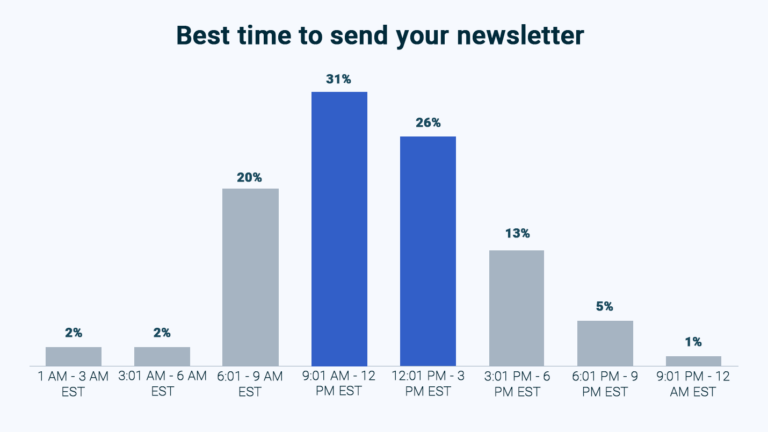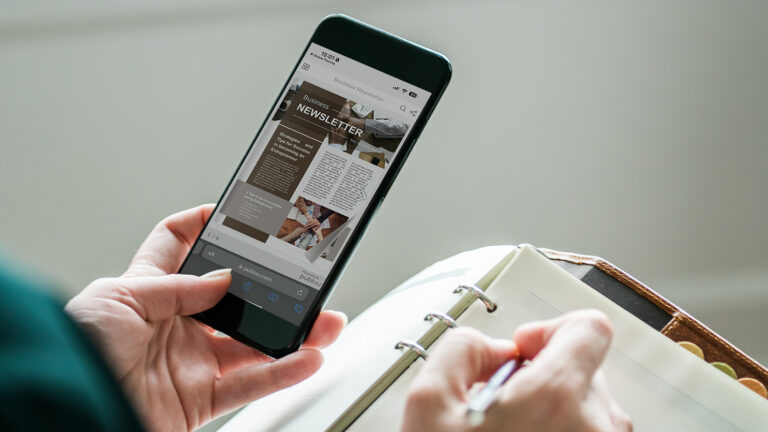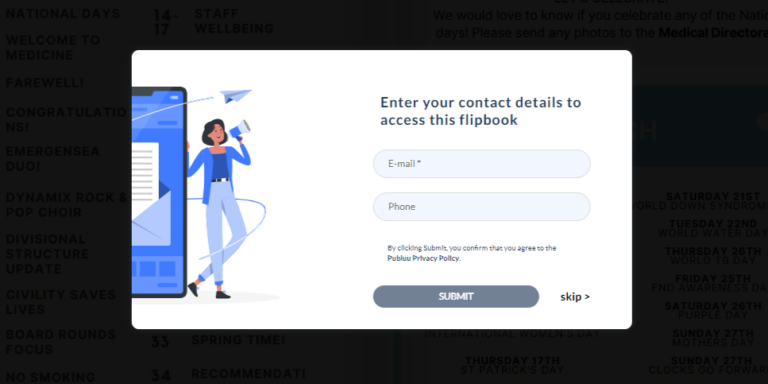Best Time to Send Newsletter in 2026 (with 10 Updated Tips!)
In 2026, the best time to send a newsletter depends more on your audience’s lifestyle and less on fixed “universal” hours. Work patterns, time zones, and mobile use have changed a lot in the last two years. Instead of one perfect time, there are several good windows that vary by audience type.

But is there a perfect time to send emails? This article will help you to determine the best days and times to send newsletters, explain why timing matters, and offer tips to make them more effective to boost both open and click-through rates.
Understanding readers' behavior for optimal mailing time
People usually check emails or browse Facebook at specific times, like lunchtime, mid-morning, or after work. To find the best time to send your newsletter, you need to understand their habits.
Use analytics services
- Use analytics services to see when your subscribers are most active online. Tools like Mailchimp, Google Analytics, or document tracker from Publuu can help you determine the best times to reach your target audience.
Segment your audience
-
Use analytics apps to collect data on location, age, gender, background, and education, then divide them into segments. For example, some people check their inbox as soon as they get home, while older readers might have more set routines, starting with morning hours and mid-day breaks.
Understand user habits
-
Craft a buyer persona based on your audience segments and consider - what this person does during the day. If your particular audience is young professionals, avoid sending an email newsletter on Mondays, as they are overwhelmed by weekend emails.
![]() People tend to check their email in the mid-morning (between 10 AM and 11 AM) or mid-afternoon (between 2 PM and 3 PM).
People tend to check their email in the mid-morning (between 10 AM and 11 AM) or mid-afternoon (between 2 PM and 3 PM). ![]()
Source: Mailbutler
Establish the first time to send an email
-
Decide whether you want to send your newsletter during work hours or later in the day, considering time zones. At work, readers might take a break to browse interesting professional content - hey, we've all been there: it does count as working! Many experts suggest sending emails around 2 PM when people are winding down their workday.
Keep testing and measuring
-
Reader behavior can change. Keep testing and measuring open and click-through rates to find the best times to send emails. Your email marketing strategy needs to rely on previously gathered habits and knowledge you keep gaining from analytics.
Research and email experts have found the best times to send newsletters, for both businesses (B2B) and individual customers (B2C). For instance, Hubspot determined that the best time to deliver emails is the first half of the working day. However, there is some more information that you might need.
1. Best day to send email
Most studies in 2025–2026 (MailerLite, HubSpot, OptinMonster) still show that Tuesday, Wednesday, and Thursday are solid choices for higher open rates.
But the gap between days is smaller now. More people check emails in the evening or on weekends, especially on their phones.
✅ Good starting point: Tuesday or Wednesday.
💡 Try also: Sunday evenings if your audience is B2C (lifestyle, retail, hobby).
2. Worst days to send email blast
Mondays still perform poorly – inboxes are full, and people are catching up. Fridays can work fine for B2C brands, especially around 4–6 PM when readers are more relaxed.
Don’t automatically avoid weekends; Saturday and Sunday mornings can perform surprisingly well for creative and personal newsletters.
![]() 99% of email users check their inbox every day, 58% of whom do it first thing in the morning.
99% of email users check their inbox every day, 58% of whom do it first thing in the morning. ![]()
Source: Mailbutler
3. Best hours to send emails
-
In 2026, email engagement spreads across the day more evenly than before. People check messages during short breaks, on public transport, or before bed.
Here are the best general time windows:
-
7–9 AM: Good for professional newsletters – people check email before starting work.
-
10 AM–12 PM: Still one of the top-performing slots for both B2B and B2C.
-
3–6 PM: Great for both – open rates rise again before the end of the workday.
-
7–9 PM: Works well for lifestyle or shopping content (people scroll after dinner).
🚫 Avoid midnight to 5 AM – emails sent at night often get buried.
👉 Pro tip: Avoid sending exactly at :00 or :30. Send at slightly random times (like 10:07 or 3:23 PM) to avoid deliverability issues during busy send hours.
-

Source: Hubspot
Personalize your send time with smart tools
Most email tools in 2026, such as Mailchimp, HubSpot, and MailerLite, offer send-time optimization. This feature automatically picks the best moment for each subscriber based on their past behavior.
Using these tools can increase your open rates by 10–25%, without you doing extra testing.
You can still A/B test your campaigns, but let smart sending do the fine-tuning.
4. Stick to workdays
It’s still true that workdays generally perform better, especially for business audiences.
However, 2026 data shows that engagement during weekends has grown for B2C and creative newsletters. You can test weekend sending if your content feels more personal or entertaining.
5. Test different times
Your audience might not follow the same pattern as global averages. Start by testing Tuesday and Thursday mornings, then experiment with afternoon or evening slots.
Always check analytics and update your timing every few months – people’s routines change!
Use A/B testing to see what works best. For more details, check out this article on running A/B marketing email tests.
6. Regular schedules
Once you find the best time to send your emails, stick with it! Regular schedules build trust. Email services like Mailchimp can automate this for you. However, for holidays or big events, consider different times to get more attention.
So when is the best time to send an email?
![]() There’s no single “perfect” hour in 2026. Most studies still point to Tuesday–Thursday mornings (around 9–11 AM) as a strong baseline, but engagement is now more flexible. The real key is consistency – sending at a time your readers expect.
There’s no single “perfect” hour in 2026. Most studies still point to Tuesday–Thursday mornings (around 9–11 AM) as a strong baseline, but engagement is now more flexible. The real key is consistency – sending at a time your readers expect.
For global audiences, make sure to schedule newsletters in each subscriber’s local time zone!
However, these are just guidelines; the best time for you might be different based on your specific audience. For instance, if everyone sends a newsletter at 9 AM on Tuesday, yours might get more attention on a Sunday afternoon. Don't be afraid to try different times to send emails, and see what works best for your readers.

Weekly emails
Weekly emails sent on Tuesdays, Wednesdays, or Thursdays get the highest open rates. Start with a weekly schedule for B2B marketing emails. You can later try sending them every two weeks or monthly.
Daily emails
Emails sent daily can overwhelm readers. They might work in specific industries or during events like conventions or fairs, but usually, only news outlets send daily newsletters.
If you have a moderate amount of content, consider sending marketing emails twice a month. For example, if you are sharing industry news or something related to a hobby, sending an email every other week might be a good idea.
For less frequent updates or a smaller audience, a monthly newsletter can also be effective. This allows you to curate high-quality content and avoid overwhelming the reader. This might be ideal for a hobbyist group sharing project ideas or a financial advisor sending market updates.
Tools for optimizing sending time
In 2026, most newsletter platforms include AI-based send-time optimization. These tools study when your readers usually open messages and adjust delivery automatically.
If your platform doesn’t have this feature, try segmenting by region or time zone for similar results.
Why Publuu is the Smartest Choice for Digital Newsletters?
Publuu is more than just a tool – it’s your all-in-one solution for creating, sharing, and tracking interactive newsletter that stand out.
With Publuu, you can easily turn a newsletter into a flipbook that opens perfectly on any device. You can embed it on your website, share it on social media, or include it directly in emails – all with just a few clicks.

How Publuu Analytics Helps You Discover
the Perfect Sending Time?
-
Log in to your Publuu account
-
Navigate to your newsletter
-
Access "Statistics" or "Tracking links"
- Click on the "Show statistics" button to access detailed analytics.
- Use the "Tracking links" button to create and monitor tracking links.
-
Select the timeframe to analyze
-
Analyze your newsletter's performance
-
Views: Check the number of views in the "Views" tab.
-
Pages viewed: Analyze the "Pages viewed" tab to see which pages were viewed the most often.
-
Average time spent: Check the average time spent on the entire newsletter or each page.
-
Hotspots: Check the number of clicks on hotspots and which ones were clicked the most.
-
Collected leads: Analyze leads collected through your newsletter to understand audience interest.
- Tracking links: Track which links were clicked the most, time spent, and overall engagement patterns.
-
![]() Want to know more about Publuu's analytics? Check our guide to optimize your email marketing by finding the best times to send your newsletters and adjust your content based on audience behavior!
Want to know more about Publuu's analytics? Check our guide to optimize your email marketing by finding the best times to send your newsletters and adjust your content based on audience behavior!
E-mail marketing platforms
These days, most email marketing tools, like Mailchimp, Constant Contact, or Campaign Monitor, offer analytics to help you find the best time to send emails. They show click-through rates (CTR) and open rates and often use charts to show which days and times get the most clicks and sales.
Many email marketing packages also include comparison tools to show average open rates for your industry, run A/B tests, or predict the best time to send newsletters. They often use AI to find the best time for each recipient.
Other analytics tools
Tools like Google Analytics or Mixpanel can be easily integrated with your email campaigns and help you learn about open rates and engagement. Publuu also integrates well with Google Analytics, providing detailed information about users' interactions with your newsletters.
Based on this data, you can start doing A/B testing. For example, if you decide to send your newsletter on Thursdays or Tuesdays, prepare two versions and use Publuu or another tool to compare open rates. Then, choose the best time by considering factors like holidays, time zones, and your audience's habits.
Why the right time in email marketing matters
Small details like subject lines or color schemes, can be crucial in email marketing. The timing of your emails can affect how well your advertising works. Here are some reasons to find the best time to send email newsletters:
Maximized visibility
Imagine your email inbox as a pile of paper. New emails on top are more likely to be read. If your inbox is full you might only read the first few emails. Sending emails at the right time, when readers are not overwhelmed, helps you reach more people.
Increased engagement
Mailerlite research shows that emails boost brand recognition. When you get an email, you remember the brand and may read it in your free time. Eventually, you'll increase engagement with the brand!

Increased conversions
The main purpose of marketing emails is to inform and generate leads and sales. The conversion rate is usually low, but you can improve it by sending emails at the right time. When recipients are more likely to engage, the chances that they will take action after reading your message also increase.
Predicting readers' actions
Many newsletters end with a call to action. You want customers to take action after reading, like buying your product or contacting you. For example, if you send your emails in the early evening, no one will be in the office to answer. It's better to send emails during business hours. Consider factors like time zone or potential audience's location.
Tips for increasing engagement
You want to create newsletters that resonate with readers and keep them waiting for the latest news. Here's how to transform those boring old newsletters into great bulletins everyone can enjoy:
1. Make it click-worthy
Make your newsletter interactive: for example, Publuu lets you add hotspots and quizzes, making your content engaging with polls, surveys and calls to action. This increases reader engagement and boosts your click-through rate (CTR).
2. Show, don't tell
Break up the text with animated GIFs, images, memes, and videos. Publuu allows you to add animated content, backgrounds, and icons.
3. Sounds come second
Integrate your newsletter with MP3s, add videos with sounds, or have someone (or an AI TTS) read the articles. This makes your newsletter more accessible and enjoyable for everyone.
4. Cater to your audience
Involve your readers by showing how you solve their problems with real-life stories, examples, or case studies. Testimonials or links to your product in use can show your major advantage and convince your readers that your product is the way to go!
5. Feedback is your friend
Imagine your newsletter as a shared project with your readers. Actively seek their input – what do they like? What can be improved? Embed comments sections or links to social media into the text to show you value their feedback.
6. Subject lines and content
Craft headlines that pique curiosity or make enticing promises. Pick good subject lines and captivating headlines in your online newsletter to grab attention.
7. Crystal clear CTAs
Don't leave your readers wondering what's next. Be clear about what you want them to do, like visit your website, make a purchase, or anything! Remember that the most effective CTAs should apply on the same day as when you send your newsletter.
8. Reward engagement
Reward your subscribers after taking action. For example, offer discount codes or lead magnets like exclusive content to attract a swarm of readers.

9. Structure matters
Keep your newsletter clean and easy to read with a clear layout that blends text and visuals seamlessly. Stick to just a few fonts – one for titles, another for body text – for a polished look.
10. Go the extra mile
Stand out from the crowd. Let's say you sell graphic design software. Why choose you over industry giants like Adobe or Corel? Offer something unique, like Publuu's tracking features or analytics, to add real value for your subscribers.
In conclusion
The best time to send a newsletter in 2026 depends on your audience – not global averages. Start with Tuesday or Wednesday around 10 AM, then experiment with afternoons and evenings. Use analytics, send-time optimization, and regular testing to discover your own golden hour.
Remember: what matters most is not just when you send, but what you send – engaging, personal content always wins.
You may be also interested in:
Employee Newsletter: Comprehensive Guide
10 Creative Newsletter Ideas for Your Business
